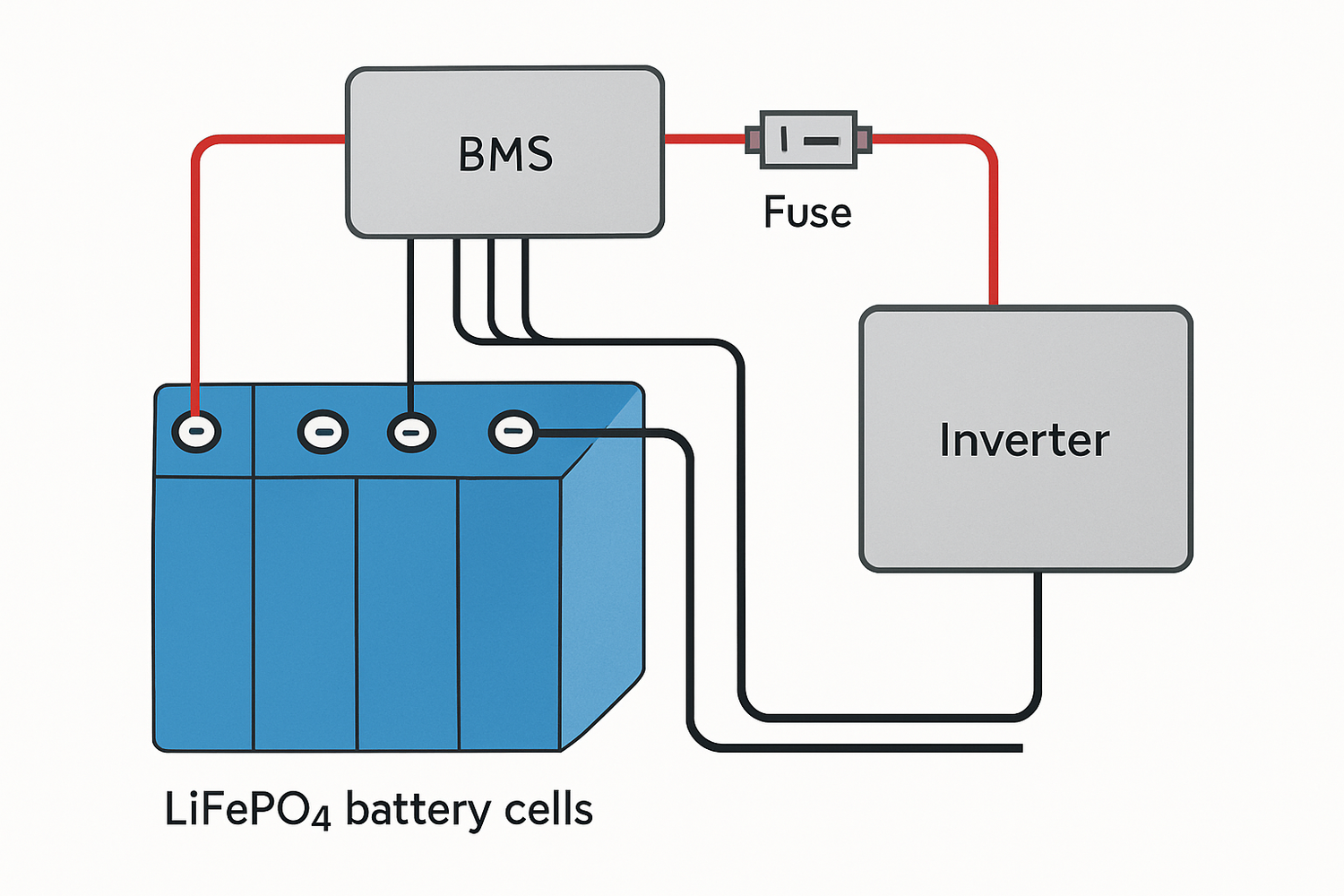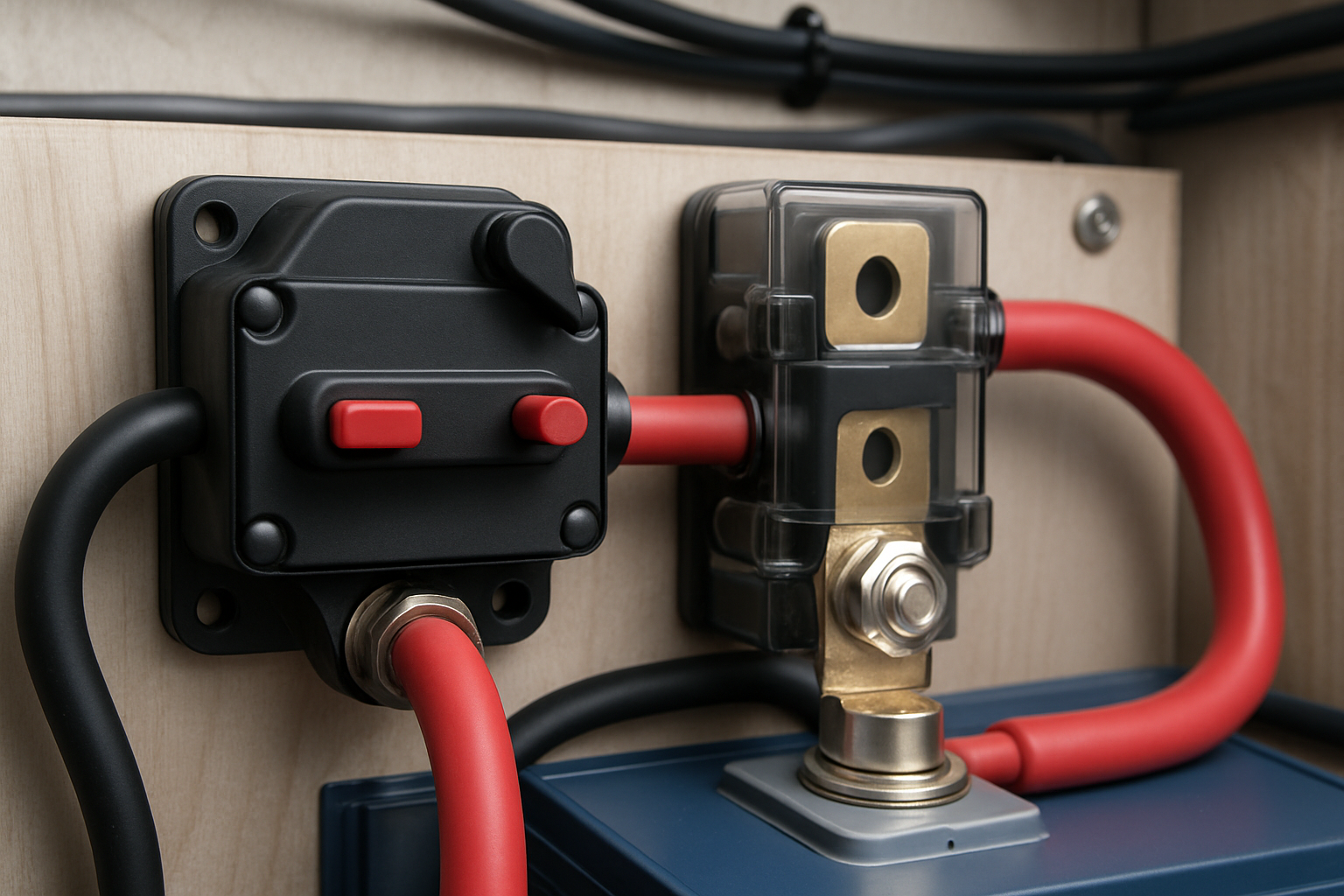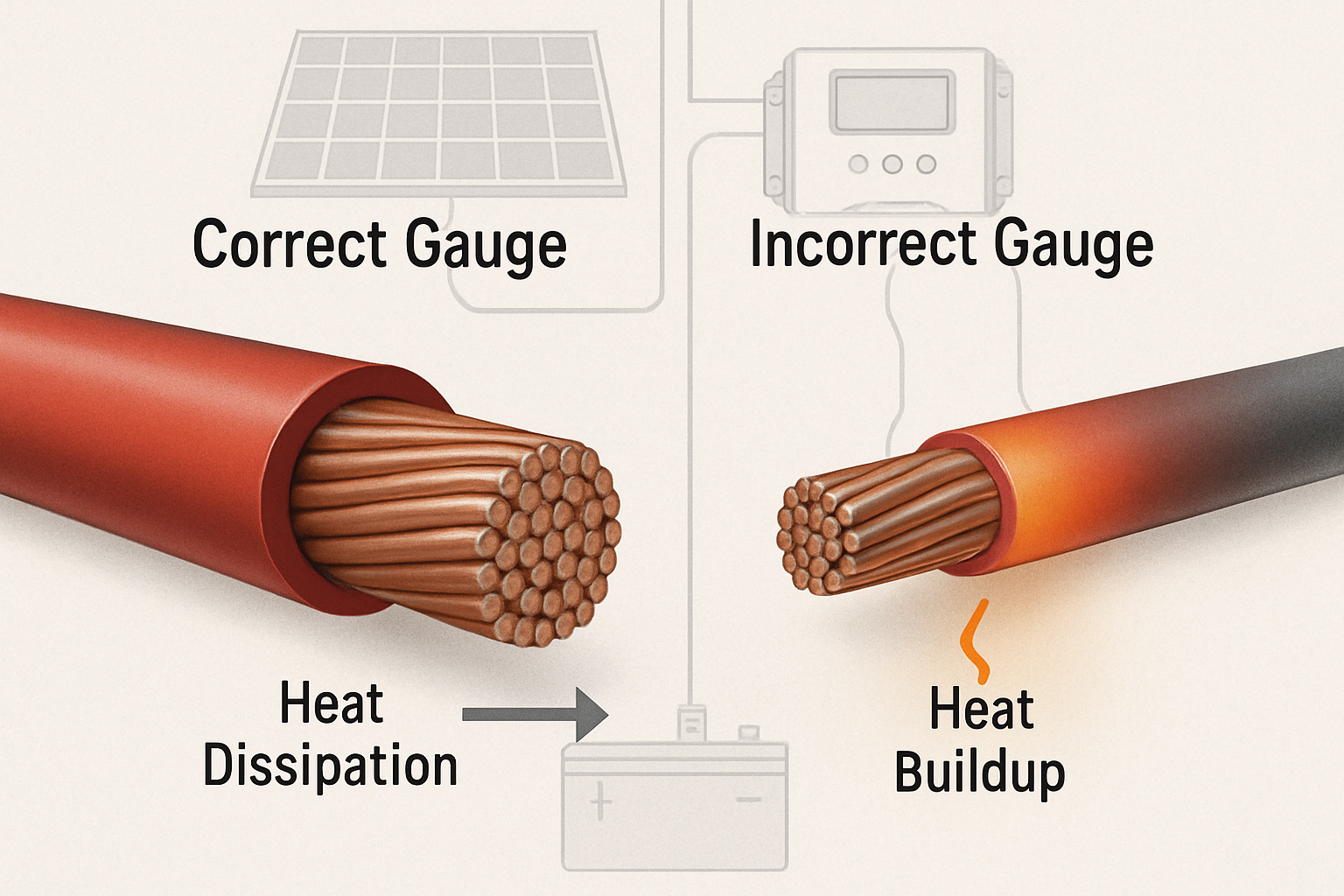Lithium Iron Phosphate (LiFePO4) batteries are a cornerstone of modern residential energy storage, offering a powerful combination of longevity, efficiency, and inherent stability. However, the full potential and safety of any battery system hinge on one critical factor: proper wiring. An incorrectly wired system not only compromises performance but also poses significant safety risks. This guide provides a clear, structured approach to wiring your LiFePO4 battery system, ensuring it operates safely and reliably for years to come.
Foundational Principles of Safe Battery Wiring
Before connecting any components, it's vital to grasp the core principles that govern a safe and efficient electrical setup. These fundamentals are the bedrock of a dependable energy storage system.
Selecting the Right Wire Gauge
The diameter of the wire, or its gauge (AWG), determines how much current it can safely carry. Using a wire that is too thin for the current flowing through it is a serious hazard. Undersized wires create high resistance, leading to significant voltage drop, wasted energy, and dangerous overheating that can melt insulation and cause a fire. Always select a wire gauge that can handle the maximum continuous current of your system's components, particularly the inverter. Consider both the amperage and the length of the wire run; longer distances often require thicker wires to minimize voltage drop.
| Amperage | Max Length at 12V | Max Length at 24V | Max Length at 48V |
|---|---|---|---|
| 50A | 10 ft | 20 ft | 40 ft |
| 100A | 5 ft | 10 ft | 20 ft |
| 150A | 3 ft | 6 ft | 12 ft |
| 200A | 2 ft | 4 ft | 8 ft |
Disclaimer: This table is for general guidance. Always consult component specifications and a qualified electrician for your specific application.
The Critical Role of Overcurrent Protection
Overcurrent protection devices, such as fuses and circuit breakers, are non-negotiable safety components. Their job is to instantly interrupt the flow of electricity in the event of a short circuit or overload, protecting your wiring from damage and preventing a fire. A fuse should be placed on the positive line, as close to the battery terminal as possible. To size it correctly, a common rule is to choose a rating that is about 125% of the maximum continuous current your load will draw. For example, if your inverter has a maximum continuous draw of 100 amps, a 125-amp fuse would be appropriate.
Ensuring Solid and Secure Connections
A loose or poorly made connection acts like a bottleneck for electricity, creating high resistance and a point of failure. This can lead to heat buildup, arcing, and significant power loss. Use high-quality, correctly sized cable lugs and a proper crimping tool to ensure a solid, gas-tight connection between the wire and the lug. When attaching lugs to terminals, always tighten them to the manufacturer's specified torque settings. This prevents connections from vibrating loose over time, which is especially important in mobile applications.
Core Components and Their Wiring Configuration
A LiFePO4 battery system consists of several key parts that must be wired together in a specific order to ensure safety and proper function. As noted in the IEA's Solar Energy Perspectives, components like inverters, protection devices, and wiring are all crucial parts of the 'balance of system'.
Integrating the Battery Management System (BMS)
The Battery Management System (BMS) is the brain of your LiFePO4 battery. It is an essential electronic circuit that monitors and protects the individual cells within the battery from operating outside their safe limits. A BMS prevents over-charging, over-discharging, over-current, and high temperatures, all of which can cause irreversible damage and create safety hazards. The BMS is wired directly to the battery cells and manages the main flow of power, making it a central component for safety.
Connecting to the Charge Controller
The charge controller regulates the power coming from your solar panels to prevent overcharging the batteries. The correct connection sequence is crucial for protecting the equipment. Always connect the battery to the charge controller first. This allows the controller to detect the system voltage and configure itself correctly. Once the controller is powered by the battery, you can then connect the solar panel array. Ensure the charge controller's settings are specifically configured for LiFePO4 chemistry to maximize battery life.
Wiring the Inverter
The inverter converts the battery's DC power to AC power for your appliances. This connection handles the highest current in the entire system. Therefore, you must use thick, appropriately sized cables kept as short as possible to minimize voltage drop and resistance. A correctly sized fuse or circuit breaker must be installed on the positive cable between the battery bank and the inverter to protect against short circuits.
Advanced Safety Measures and System Layout
Beyond the basics, several other considerations can further enhance the safety and reliability of your LiFePO4 battery system.
Series vs. Parallel Connections Explained
You can connect multiple batteries to increase your system's voltage or capacity.
- Series Connection: Connecting batteries in series (positive to negative) increases the total voltage while the capacity (Amp-hours) remains the same. For example, two 12V 100Ah batteries in series become a 24V 100Ah bank.
- Parallel Connection: Connecting batteries in parallel (positive to positive, negative to negative) increases the total capacity while the voltage remains the same. Two 12V 100Ah batteries in parallel become a 12V 200Ah bank.
Implementing an Emergency Shut-off Switch
A master disconnect switch, installed on the main positive line from the battery bank, provides a quick and easy way to completely de-energize the system. This is invaluable for performing maintenance, troubleshooting, or responding to an emergency. It adds a robust layer of control and safety to your entire setup.
Physical Protection and Environmental Considerations
The physical location of your battery bank is a key safety factor. Batteries should be housed in a sturdy, non-combustible enclosure to protect them from physical damage. The location must be dry and well-ventilated to prevent the accumulation of heat. While LiFePO4 batteries have excellent thermal stability, keeping them within their recommended operating temperature range is vital for both safety and longevity. According to the International Renewable Energy Agency (IRENA), proper system design includes considerations for all environmental factors to ensure long-term viability.
System Checks and Long-Term Maintenance
Proper wiring is not a one-time task. Regular checks and maintenance are essential to ensure your system remains safe and efficient over its entire lifespan.
Pre-Power-Up Safety Checklist
Before you energize your system for the first time, run through a final safety check:
- Verify all polarities (positive and negative) are correct. Incorrect polarity can instantly damage components.
- Confirm that every single connection is tight and secure.
- Ensure all fuses and circuit breakers are correctly sized and installed.
- Check that the battery enclosure is secure and properly ventilated.
Routine Maintenance for Lasting Safety
Periodically, you should inspect your system. Check that all wiring connections remain tight, as vibrations can cause them to loosen over time. Look for any signs of wear, abrasion, or discoloration on the cables, which could indicate heat stress. Regularly monitoring your system's output is also key to spotting potential issues early. Understanding key metrics like depth of discharge and cycle life, as detailed in this comprehensive guide to solar storage performance, helps ensure both safety and longevity.
A Final Look at System Integrity
Wiring a LiFePO4 battery system correctly is fundamental to creating a safe, efficient, and reliable source of power. By focusing on the core principles—using correctly sized wires, implementing robust overcurrent protection, ensuring all connections are secure, and integrating a high-quality BMS—you build a system with integrity. This attention to detail not only protects your investment but also provides peace of mind, allowing you to fully benefit from the energy independence that a well-designed storage system offers.
Frequently Asked Questions
What size fuse should I use for my LiFePO4 battery?
The fuse should be sized to protect the wire. A common practice is to choose a fuse rated for approximately 125% of the maximum continuous current that will flow through the circuit. You must ensure this fuse rating is less than the maximum ampacity of the wire it is protecting.
Can I mix different LiFePO4 batteries in the same bank?
It is strongly advised not to mix batteries of different capacities, brands, or ages. Mismatched cells can lead to imbalances in charging and discharging, which reduces the overall performance and lifespan of the battery bank and can create safety risks.
How important is a Battery Management System (BMS)?
A BMS is absolutely essential for any LiFePO4 battery pack. It is the primary safety device that protects the battery cells from damage by preventing over-voltage, under-voltage, over-current, and extreme temperatures. Operating a LiFePO4 battery without a BMS is extremely unsafe and will drastically shorten its life.





Leave a comment
All comments are moderated before being published.
This site is protected by hCaptcha and the hCaptcha Privacy Policy and Terms of Service apply.